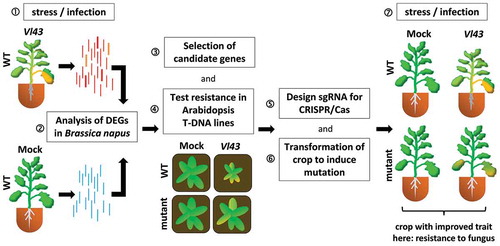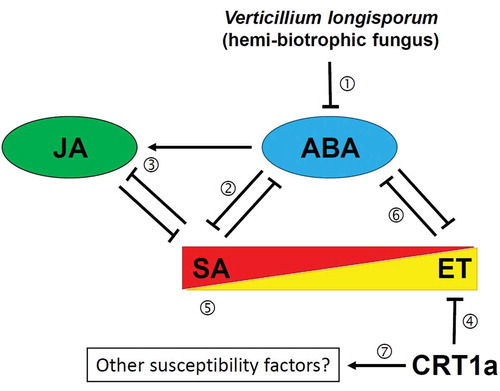Figures & data
Figure 1. Simplified pipeline to identify candidate genes encoding novel susceptibility factors by functional genomics, for details see text.

Figure 2. Working model of phytohormone crosstalk during the Brassica napus – V. longisporum interaction.① ABA is repressed in oilseed rape, but not in Arabidopsis. ② Therefore SA can accumulate higher compared to Arabidopsis. ③ Higher SA and lower ABA levels negatively influence JA, which is stronger activated in Arabidopsis. ④ ET responses could be activated in the crt1a mutants due to improper folding of negative regulators. ⑤ ET might directly benefit SA accumulation or indirectly via negatively affecting ABA ⑥. It has been proposed that the reduced ABA response might help the fungus to establish a long-lasting compatible interaction.Citation4 while the mechanism underlying resistance in the crt1a background is currently unknown and could also involve correct folding of other – yet unknown – susceptibility factors ⑦.Citation3

